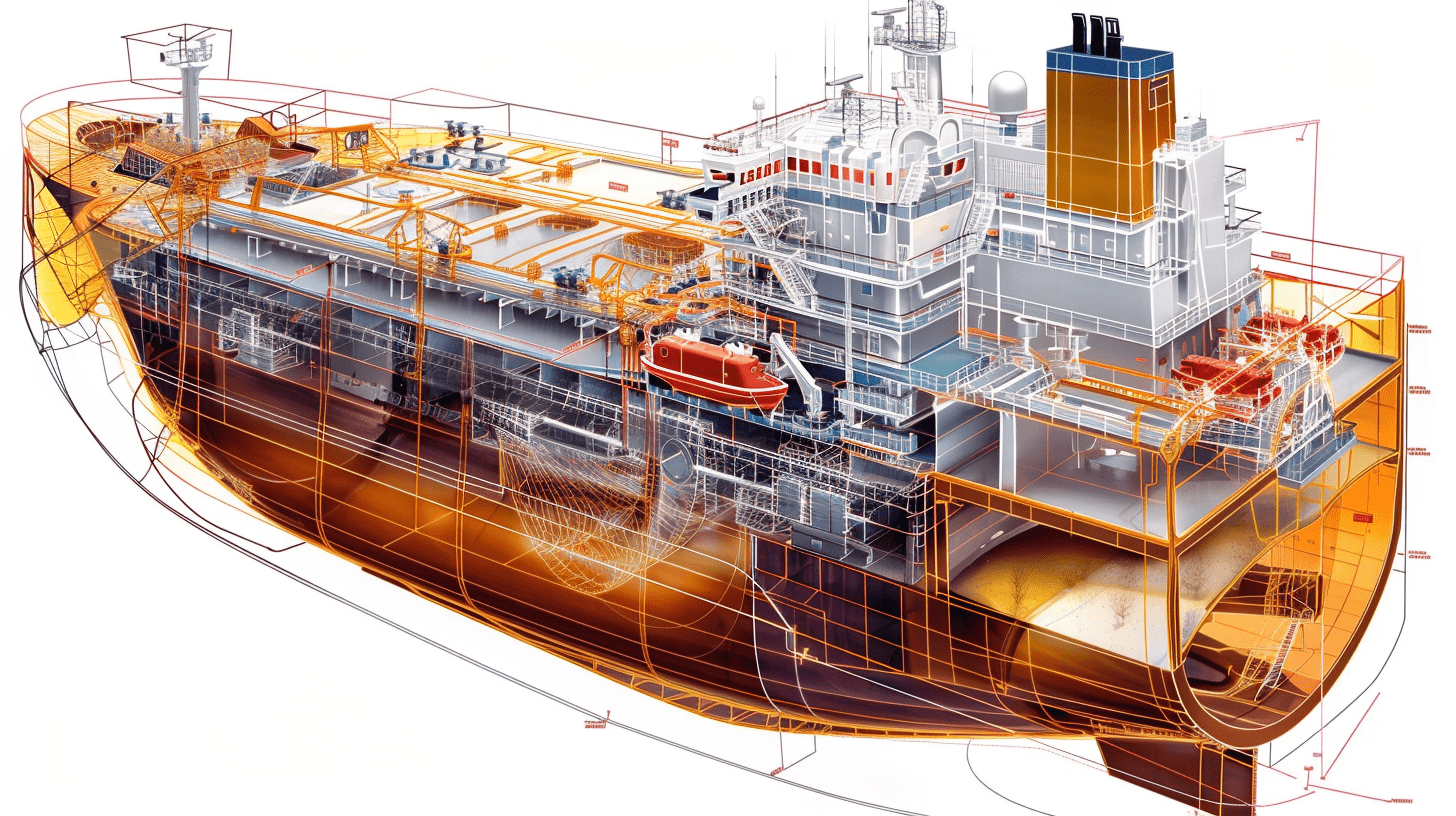Have you ever wondered how the stern tube arrangement on ships impacts their performance at sea? From propeller shaft alignment to vibration control, the intricacies of this system can greatly influence a vessel’s efficiency and safety. Consider the design factors, maintenance protocols, and technological advancements that shape the operation of stern tubes in modern maritime engineering. Understanding these nuances is key to revealing the full potential of a ship’s propulsion system and ensuring smooth sailing in challenging marine environments.
Functions of Stern Tubes
The stern tubes on ships serve essential functions in maintaining the propulsion system’s integrity and efficiency. One important role of the stern tube is to provide support and alignment for the propeller shaft, guaranteeing that it remains in the correct position for ideal performance.
Proper propeller alignment is critical to prevent issues such as excessive wear on bearings and seals, which can lead to costly repairs and downtime.
Vibration analysis is another key function of the stern tube. By monitoring vibrations in the propulsion system, engineers can detect early signs of misalignment or other issues that may impact the smooth operation of the shaft and propeller.
Addressing vibration abnormalities promptly can help prevent further damage to the components and maintain the safety and efficiency of the vessel.
Types of Stern Tube Designs
Amid the myriad considerations in ship design and operation, the stern tube arrangement stands as a pivotal element that warrants meticulous attention.
When it comes to types of stern tube designs, there’s a balance between traditional designs and modern innovations.
Traditional stern tube designs have been the backbone of maritime propulsion systems for decades. These designs typically feature a solid shaft encased in a stern tube, providing a robust and reliable setup.
However, modern innovations have brought about new designs that incorporate advanced materials, improved lubrication systems, and enhanced sealing mechanisms. These innovations aim to reduce maintenance requirements, increase efficiency, and prolong the lifespan of the components.
While traditional designs offer proven reliability, modern innovations endeavor to address the challenges posed by evolving operational demands and environmental regulations.
Ship designers and operators must carefully evaluate the advantages and limitations of each type of stern tube design to choose the most suitable option for their specific needs.
Factors Influencing Arrangement
Consider various factors when determining the arrangement of stern tubes on ships. Achieving ideal hydrodynamic efficiency is essential in reducing resistance and improving fuel efficiency. Proper placement of the stern tube also plays a significant role in vibration control, guaranteeing smooth operation and prolonging machinery life.
Selecting appropriate sealing mechanisms is critical to prevent water ingress and maintain lubrication integrity. Material selection for the stern tube must account for corrosion resistance, mechanical properties, and compatibility with lubricants.
Environmental considerations such as biofouling prevention and compliance with regulations further influence the arrangement. Installation challenges, including limited space and alignment requirements, must be carefully addressed to guarantee a successful setup.
Maintenance Practices for Stern Tubes
When maintaining stern tubes on ships, it’s essential to adhere to a structured schedule to guarantee peak performance and longevity of the system.
Confirming the proper maintenance practices for stern tubes is vital to prevent costly breakdowns and assure the safety of the vessel.
Here are some key points to contemplate:
- Regular Inspections: Implement a routine inspection schedule to check for wear, leaks, and alignment issues. This helps in identifying potential problems early on and prevents major failures.
- Following Safety Protocols: Always follow safety protocols when working on stern tubes to protect yourself and others. This includes wearing appropriate personal protective equipment and following established procedures.
- Lubrication Maintenance: Proper lubrication is essential for the smooth operation of stern tubes. Regularly check and maintain the lubrication system to guarantee peak performance and reduce the risk of overheating or seizure.
Innovations in Stern Tube Technology
To stay abreast of the latest advancements in ship propulsion systems, it’s imperative to explore the continuous evolution of stern tube technology.
Innovations in stern tube design have led to the incorporation of sustainable materials and smart sensors, enhancing performance and reliability. Sustainable materials like advanced composites and bio-based lubricants are being utilized in stern tubes to reduce environmental impact and improve operational efficiency. These materials offer enhanced resistance to wear and corrosion, prolonging component lifespan and reducing maintenance requirements.
Moreover, the integration of smart sensors in modern stern tube systems enables real-time monitoring of key parameters such as temperature, vibration, and lubricant condition.
This data allows for predictive maintenance strategies, minimizing downtime and optimizing operational performance. Smart sensors also facilitate condition-based monitoring, enabling proactive interventions to prevent potential failures before they occur.
Frequently Asked Questions
How Does Stern Tube Arrangement Affect Ship Stability?
When considering ship stability, stern tube dynamics play an essential role. Factors such as weight distribution and hull design are influenced by the stern tube arrangement. Understanding these elements is vital for ensuring ideal stability at sea.
Can Stern Tube Design Impact Fuel Efficiency?
When considering stern tube design, remember that it can greatly impact fuel efficiency. The arrangement affects stern tube hydrodynamics, which directly influences propulsion efficiency. Ideal design minimizes drag, enhancing overall ship performance and reducing fuel consumption.
What Are the Common Challenges Faced During Stern Tube Maintenance?
When maintaining stern tubes, challenges like seal failures, vibration issues, lubricant degradation, and alignment problems may arise. Regular inspections and proactive maintenance can mitigate these issues, ensuring smooth operations and preventing costly downtime at sea.
Are There Any Environmental Implications of Stern Tube Arrangements?
When considering stern tube arrangements on ships, it’s essential to assess their environmental impact. Proper design can aid in pollution control and noise reduction, contributing to more sustainable maritime operations and compliance with stringent regulations.
How Do Stern Tube Innovations Contribute to Reducing Maintenance Costs?
Innovations in stern tube designs, like advanced sealing technology and efficient lubrication systems, play an essential role in cutting maintenance costs. These enhancements enhance performance, reduce wear, and guarantee smoother operations, ultimately saving you time and money.







